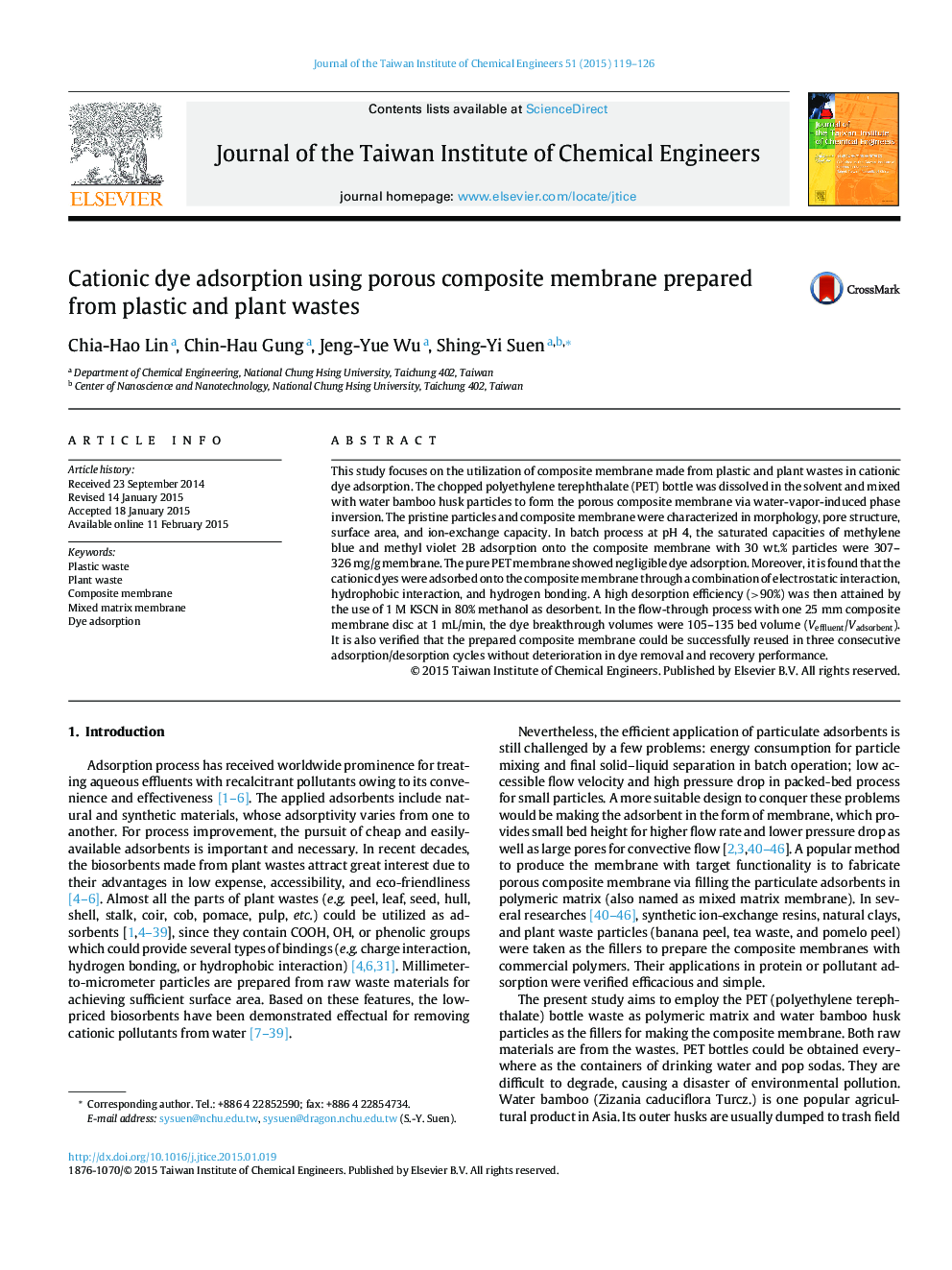| کد مقاله | کد نشریه | سال انتشار | مقاله انگلیسی | نسخه تمام متن |
|---|---|---|---|---|
| 690778 | 1460423 | 2015 | 8 صفحه PDF | دانلود رایگان |
• Water bamboo husk particles were blended in PET solution to make the membrane.
• The saturated dye adsorption capacities of composite membrane were 307–326 mg/g.
• >90% desorption could be achieved with the use of 1 M KSCN in 80% methanol.
• Using one 25 mm membrane disc, the breakthrough volumes were 105–135 bed volume.
• The composite membrane was successfully reused over three adsorption/desorption cycles.
This study focuses on the utilization of composite membrane made from plastic and plant wastes in cationic dye adsorption. The chopped polyethylene terephthalate (PET) bottle was dissolved in the solvent and mixed with water bamboo husk particles to form the porous composite membrane via water-vapor-induced phase inversion. The pristine particles and composite membrane were characterized in morphology, pore structure, surface area, and ion-exchange capacity. In batch process at pH 4, the saturated capacities of methylene blue and methyl violet 2B adsorption onto the composite membrane with 30 wt.% particles were 307–326 mg/g membrane. The pure PET membrane showed negligible dye adsorption. Moreover, it is found that the cationic dyes were adsorbed onto the composite membrane through a combination of electrostatic interaction, hydrophobic interaction, and hydrogen bonding. A high desorption efficiency (>90%) was then attained by the use of 1 M KSCN in 80% methanol as desorbent. In the flow-through process with one 25 mm composite membrane disc at 1 mL/min, the dye breakthrough volumes were 105–135 bed volume (Veffluent/Vadsorbent). It is also verified that the prepared composite membrane could be successfully reused in three consecutive adsorption/desorption cycles without deterioration in dye removal and recovery performance.
Journal: Journal of the Taiwan Institute of Chemical Engineers - Volume 51, June 2015, Pages 119–126
